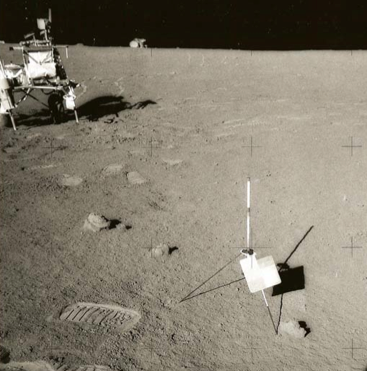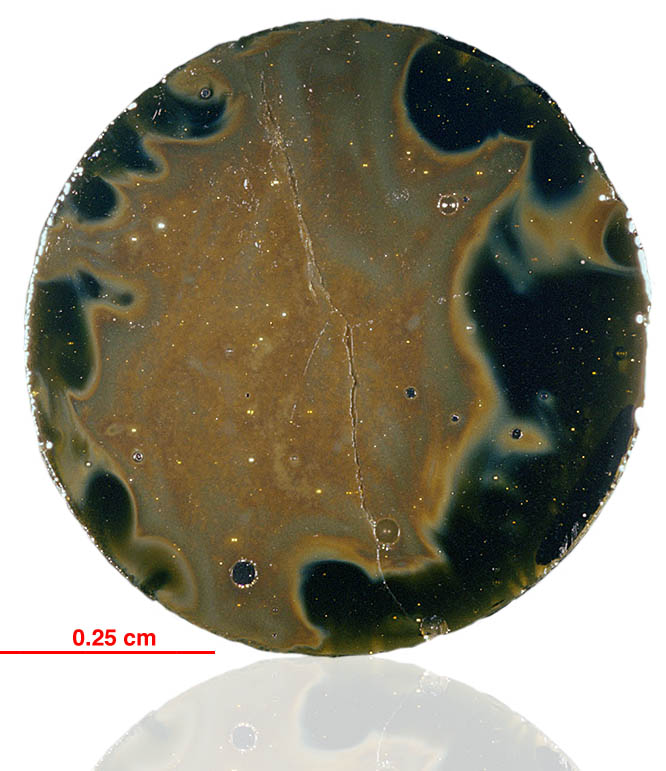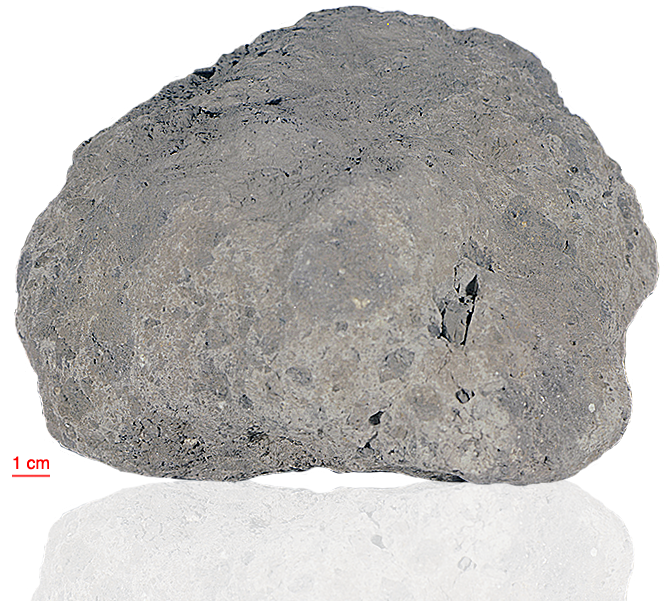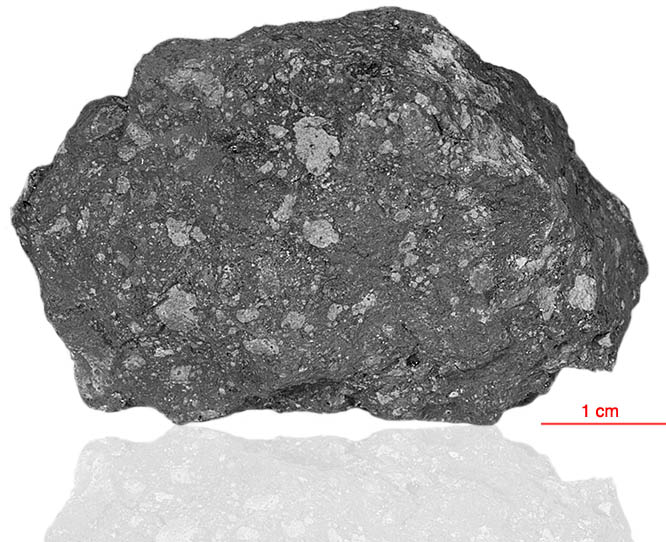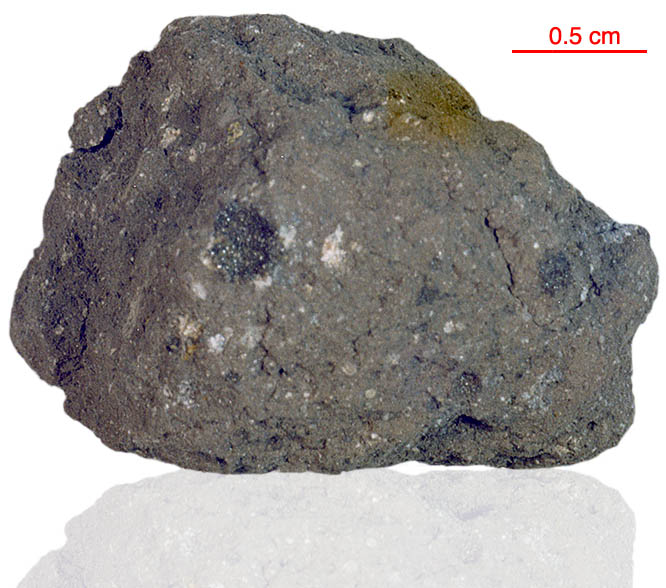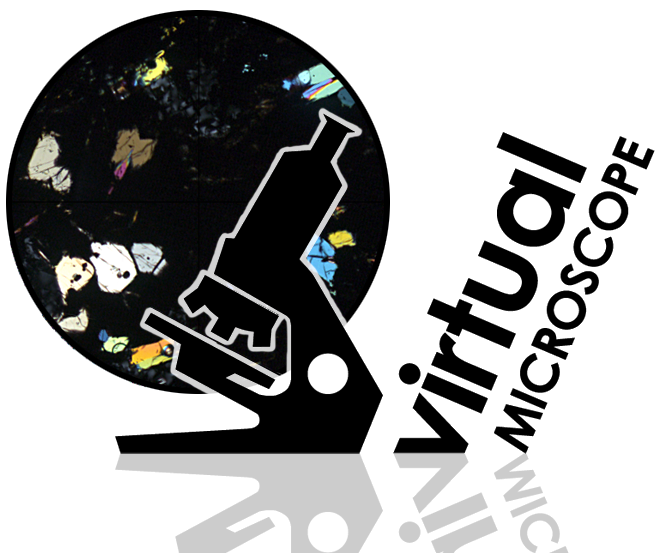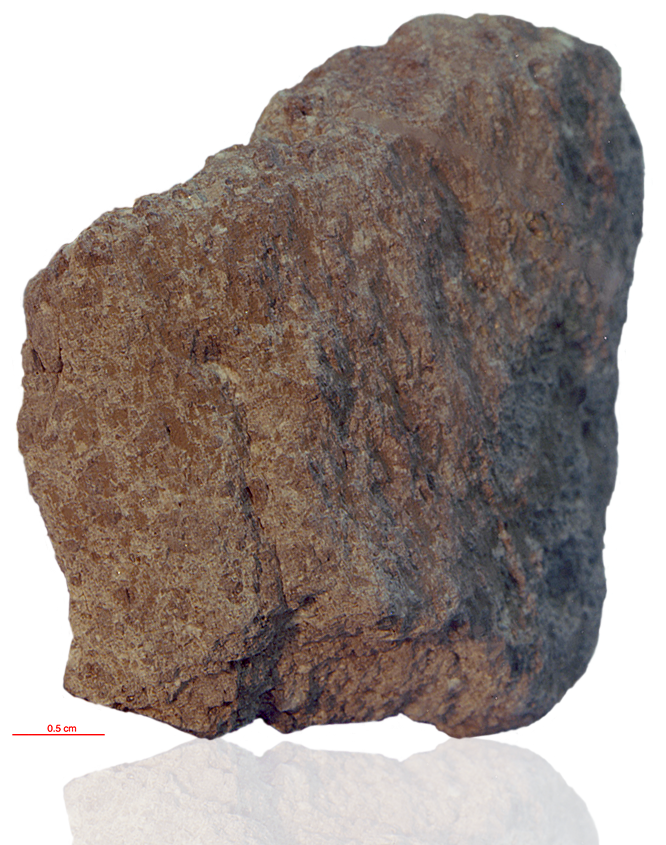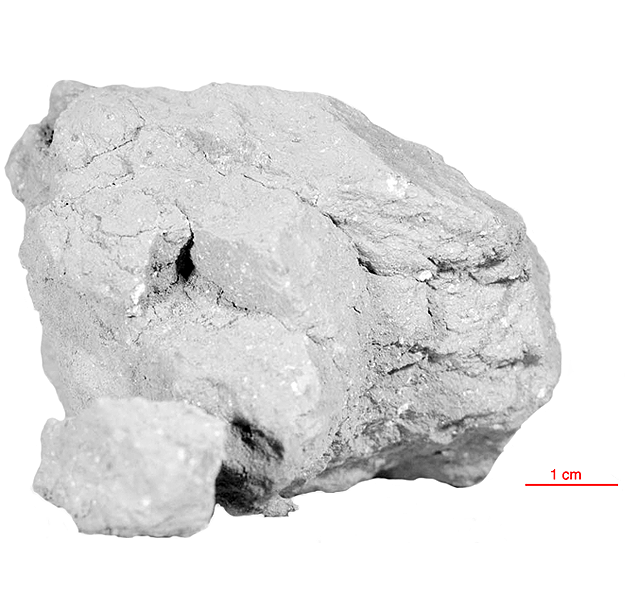
Fact sheet
Samples 14041–14046 are fragments from a fractured clod that broke apart when it was collected. 14042 is the most like an Apollo 14 soil with a relatively high percentage of recognisable agglutinate fragments and a high carbon content. is a very friable, medium grey regolith breccia with very few clasts. The matrix contains glass and has a seriate grain size distribution of mineral clasts. The matrix is porous (about 35%) containing glass filaments and many tiny grains. The sample contains many spherical glass globules and irregularly-shaped glass of variable colour and composition. The sample has been classified as a vitric matrix breccia.
The sample weighed 103.2 grams before analysis. It has not been dated.
Our thin section is slightly thick and in places displays plagioclase feldspar as pale yellow crystals (in XPL). Rotation 1 shows fragments of breccia in breccia and rotation 2 shows a region containing small fragments of plagioclase-rich anorthositic material.
Further details of this and other Apollo samples are here: http://curator.jsc.nasa.gov/lunar/
The Apollo 14 landing site was in a region formed by impact-basin debris.
Most of the 42 kilograms of rocks and soil collected on Apollo 14 are breccias (rocks that are composed of fragments of other, older rocks). In some cases, the rock fragments that form a breccia are themselves breccias. Such rocks obviously have experienced complex histories with multiple generations of impact events. Some breccias were heated enough that some of the material in the rock was melted.
Apollo 14 was launched on 31 January 1971.
